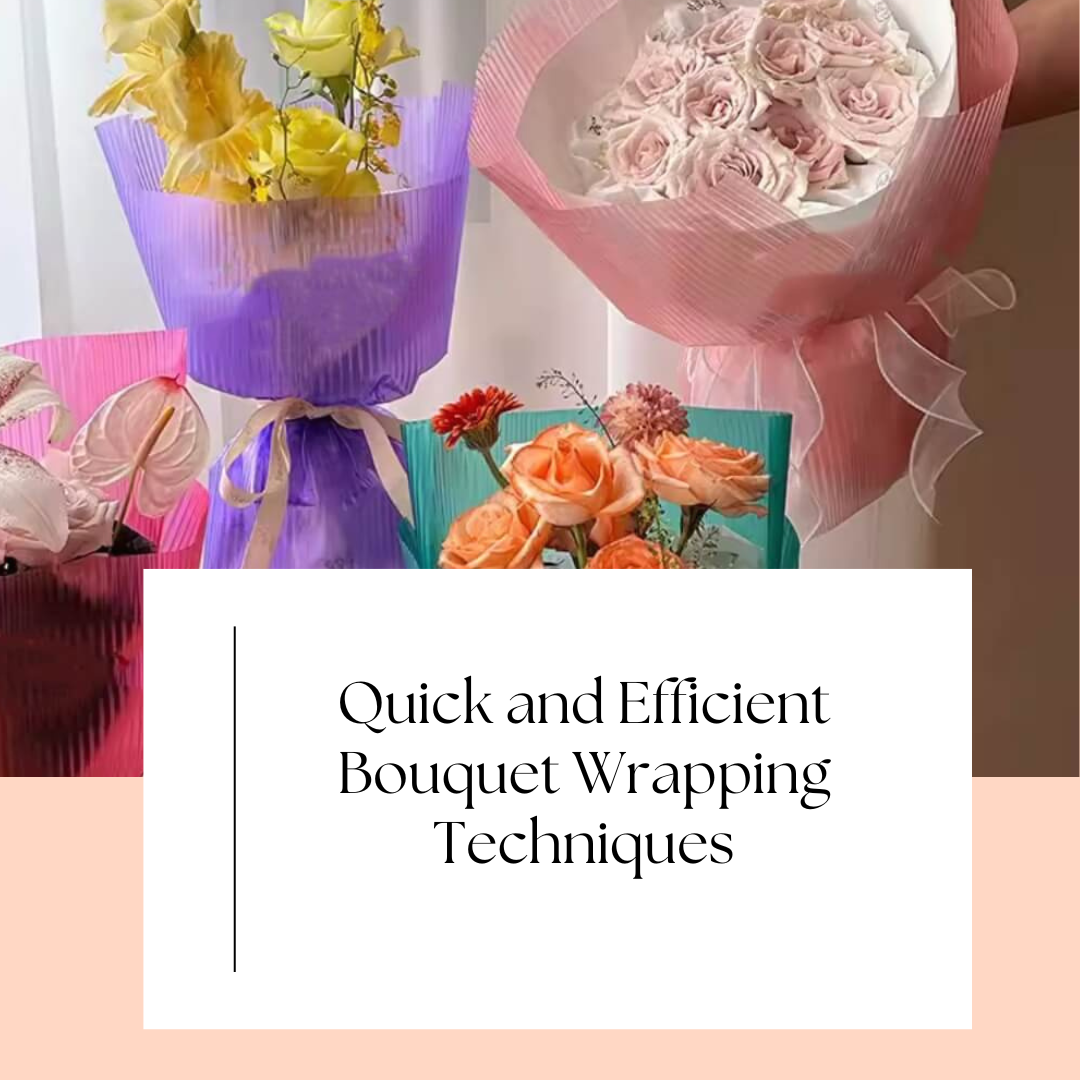When it comes to floral arrangements, presentation is just as important as the flowers themselves. A beautifully wrapped bouquet not only enhances the overall aesthetic but also adds a personal touch that makes the gift even more special. However, for busy florists or those short on time, wrapping a bouquet quickly and efficiently without sacrificing style can be a challenge. In this blog, we’ll explore some quick and effective bouquet wrapping techniques using flowers wrapping paper that will ensure your flowers look their best in no time.
The Importance of Efficient Bouquet Wrapping
In the fast-paced world of floristry, time is of the essence. Whether you're preparing multiple bouquets for an event or a last-minute order, having a few go-to techniques for quick and efficient wrapping is essential. Not only does it save time, but it also ensures that every bouquet leaves your shop looking polished and professional. With the right floral wraps and a bit of practice, you can achieve a beautiful wrap in just a few minutes.
Choosing the Right Materials
Selecting the Best Flowers Wrapping Paper
The first step to efficient bouquet wrapping is selecting the right bouquet paper. Look for materials that are easy to work with and provide a clean, crisp finish. Some popular options include:
- Kraft Paper: This is a durable and versatile option that’s easy to fold and wrap around bouquets. It gives a rustic, natural look that's perfect for casual arrangements.
- Tissue Paper: Lightweight and available in a wide range of colors, tissue paper is ideal for adding a pop of color to your bouquet. It’s also easy to layer, which can add depth and texture to your wrapping.
- Cellophane: If you’re looking for something that adds a bit of shine and protection, cellophane is a great choice. It’s also transparent, allowing the beauty of the flowers to take center stage.
Using Floral Wraps for Added Flair
For a more polished and professional look, consider using floral wraps. These are pre-cut sheets of paper or fabric that are designed to wrap around a bouquet quickly and easily. Floral wraps often come with pre-attached ties or ribbons, which further speed up the wrapping process. They’re available in a variety of designs and materials, making them a versatile choice for any bouquet.
Essential Packing Supplies
In addition to the wrapping materials, make sure you have the necessary packing supplies on hand. This includes:
- Ribbon or Twine: For securing the bouquet and adding a decorative touch.
- Tape or Stickers: For keeping the wrapping paper in place.
- Tags: For adding a personalized message or branding.
Step-by-Step Bouquet Wrapping Techniques
The Classic Cone Wrap
The cone wrap is a timeless and elegant way to wrap a bouquet. It’s quick to execute and works well with most types of bouquet paper.
-
Cut the Paper: Start by cutting a square piece of bouquet wrapping paper. The size will depend on the size of your bouquet, but a 20x20 inch square is usually sufficient for a medium-sized arrangement.
-
Position the Bouquet: Place the bouquet diagonally on the paper, with the stems pointing towards one corner.
-
Fold and Secure: Fold one side of the paper over the flowers, then wrap the opposite side around to create a cone shape. Secure the paper with tape or a sticker.
-
Finish with Ribbon: Tie a ribbon or twine around the stems to secure the wrap and add a decorative element.
The Simple Fold Wrap
For smaller bouquets or when time is of the essence, the simple fold wrap is a great option.
-
Cut a Rectangular Piece of Paper: Use floral wraps that’s long enough to cover the stems and part of the flowers.
-
Wrap Around the Stems: Place the stems at one end of the paper and roll them up tightly.
-
Fold the Top: Once the stems are wrapped, fold the top edge of the paper down to cover the flowers slightly.
-
Secure with Ribbon: Tie a ribbon around the middle of the bouquet to hold everything in place.
The Layered Tissue Wrap
If you want to add a touch of luxury to your bouquet, try the layered tissue wrap.
-
Prepare the Layers: Cut several sheets of tissue paper slightly larger than your bouquet. Layer them on top of each other, alternating colors if desired.
-
Wrap the Bouquet: Place the bouquet in the center of the tissue paper layers. Gather the paper up around the flowers, creating a ruffled effect.
-
Secure with Ribbon: Tie a ribbon around the base of the flowers to secure the paper.
Tips for Speedy Bouquet Wrapping
Pre-Cut Your Materials
One of the easiest ways to speed up the wrapping process is to pre-cut your bouquet paper. Having these materials ready to go means you can grab what you need and start wrapping immediately, without having to stop and measure.
Use Simple Techniques for Large Orders
When you’re working on large orders or have a tight deadline, stick to simple wrapping techniques like the cone wrap or simple fold wrap. These methods are quick to execute and still look beautiful.
Keep Packing Supplies Handy
Ensure that your packing supplies, such as ribbon, tape, and scissors, are easily accessible. Having everything within reach will help you wrap bouquets more efficiently.
Practice Makes Perfect
Like any skill, bouquet wrapping gets easier and faster with practice. Take some time to practice different wrapping techniques, and soon you’ll be able to wrap a bouquet in minutes.
Conclusion
Wrapping a bouquet quickly and efficiently doesn’t mean you have to compromise on style. By choosing the right flowers wrapping paper, using simple yet elegant techniques, and keeping your packing supplies organized, you can create beautiful, professionally wrapped bouquets in no time. Whether you’re a busy florist or simply want to improve your gift-wrapping skills, these tips and techniques will help you achieve stunning results every time.

